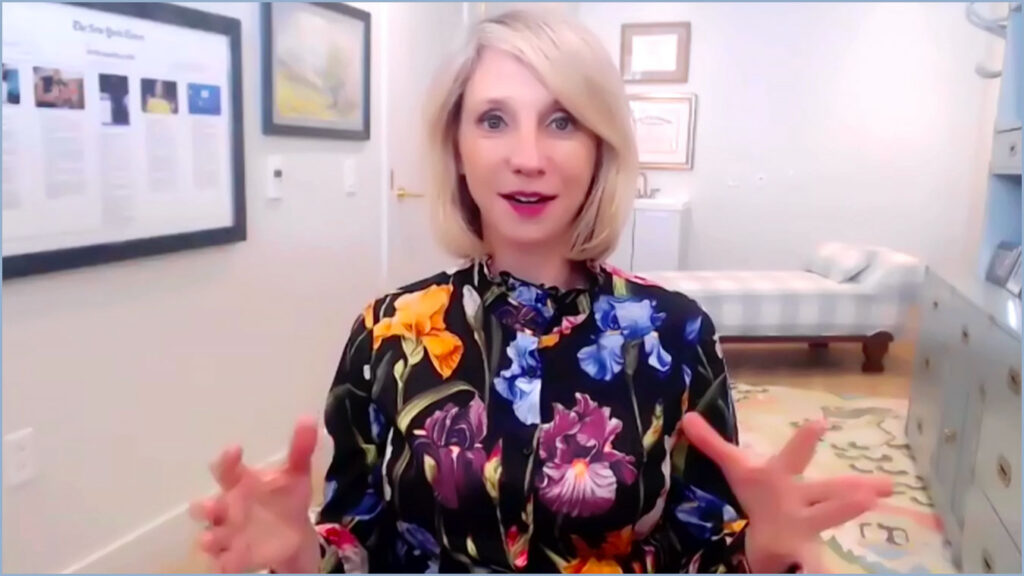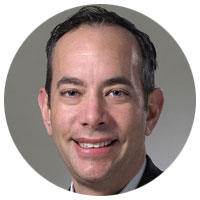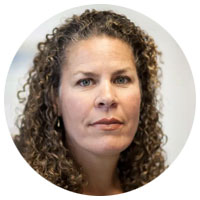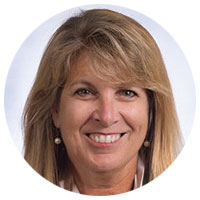
Lowering the Barriers to Medication Treatment for People with Opioid Use Disorder
Evidence for a Low-Threshold Approach
Substance Use Disorder
News

If you want to reform state laws to require detox facilities to include medications like buprenorphine and methadone in their treatments, you should start by changing the “hearts and minds” of those who oppose it, Rebekah Gee, MD, MPH, told the January 14, 2022 Penn LDI/CHERISH Virtual Conference at the University of Pennsylvania.
Keynoting a gathering organized by Penn’s Leonard Davis Institute of Health Economics (LDI) and the Center for Health Economics of Treatment Interventions for Substance Use Disorder, HCV and HIV (CHERISH), the former Louisiana Secretary of Health detailed how that approach helped pass a state law requiring that residential treatment facilities offer MOUDs (Medications for Opioid Use Disorder) in one of the country’s most conservative states.
Now CEO of Health Care Services for the Louisiana State University Health System, Gee has been something of a wunderkind in the last decade in achieving progressive reforms in some of health care’s most politically divisive areas, like Medicaid expansion and the MOUD issue. Evidence shows MOUDs are effective in reducing overdose and mortality rates. But they are widely underutilized because of beliefs that it is wrong to treat drug addiction with more drugs. (Continues below conference videos)

Before becoming Louisiana Secretary of Health, Gee was Chief Medical Officer of the state’s Medicaid program at a time when deep South states from Virginia to Texas refused to expand their Medicaid programs under the Affordable Care Act. Nevertheless, working with two Democratic governors, she and her team helped pass a new law expanding Medicaid in Louisiana, which provided health insurance to 600,000 more low-income residents. Likewise, her team worked to make syringe exchange programs legal as well as require that residential treatment facilities offer MOUDs.
How did she accomplish this?
“I had to learn to speak Republican,” said Gee, acknowledging she is a Democrat. “My heart is with social justice and the idea that health care is a right. But that’s not the approach of every policymaker, especially in conservative states. Right now in this country there’s a lot of ‘talking past,’ not ‘talking with’ going on in the policy space. That’s why it’s so important to focus on ‘hearts and minds’ first. If you want to solve a problem, you really have to convince people that there is a problem and you have to figure out what’s in it for them.”
“One of the things that made it easier,” Gee continued, “was that the parts of Louisiana hardest hit with opioid overdose deaths tended to be the most conservative. And so, it became easier to talk to legislators, policymakers, and local leaders there because they might have had a cousin, a brother, or sister who had been involved in an addiction journey and needed help. And so, I think changing hearts and minds was easier. But it was important to talk about it as a disease and really deal with stigma reduction.”
“We got creative about how we framed the need for change,” Gee said. “For instance, my team felt it was important to allow needle exchanges so we could reduce the risk of transmission of infectious viruses for individuals who were using drugs with a needle. We were able to get a law passed because we went to the Sheriffs Association, a very conservative group, and said, ‘Look, the folks who are working with you may be in a situation where they might be exposed to a needle and might get infected. Isn’t it in all of our best interests that our first responders, as well as individuals in society, have less of this disease?’ Then, we had a sheriff introduce the bill and it was passed.”
Gee also pointed out that two other elements of her department’s ‘secret sauce’ were data gathering and effective storytelling.
“Ironically, it is somewhat unusual for policymakers to focus on a data-driven approach to problem solving,” said Gee. “It really matters to have data first and then change later. You need to first get answers for where is the problem? Where do we focus on solving it? Are we getting better or are we getting worse? Where are the deaths? What kinds of drugs are being used? What are the prescribing patterns? If we don’t know where we are, we can’t improve it. In Medicaid expansion, for instance, we showed that it wasn’t just about getting a Medicaid card, because we were able to show the numbers of people being treated for addiction disorder who needed the coverage. We created the Louisiana Opioid Data and Surveillance System (LODDS) that provided the data we were able to use for grant funding, policymakers, advocates, and clinicians practicing across the state.”
“Another very effective tool was storytelling,” said Gee. “We told stories of those who benefited from the Medicaid expansion so that they were real. They were musicians, they were waiters in the restaurant you might have gone to. They had breast cancer. I think bringing in storytelling is really important in terms of changing hearts and minds.”
Equity within both the policy and practice of substance use disorder treatment was another discussion point in the conference’s first panel entitled “Progress Toward Model State Licensing Standards for Access to Medications for Opioid Use Disorder (MOUDs).”

“We hear people frequently saying ‘disparities’ or ‘inequities,’ but I would say ‘racism’,” said panelist Chinazo O. Cunningham, MD, MS, Commissioner of the New York State Office of Addiction Services and Supports. “This country has a history of racism when it comes to policies around substance use. And I think we have to say that out loud and then bring an equity lens to everything we do.”
“Can we address this from a licensing or regulatory aspect? I think that certainly could be an effective tool,” Cunningham continued. “I think the discussion should also include widening access to medication through pharmacies. Pharmacies are much more available than treatment services and medical providers. Can we leverage pharmacies to make sure they have naloxone available along with medications to treat substance use disorders, like buprenorphine? We have to find ways to potentially expand access for populations that have not been able to access substance use disorder treatment.”
“In another area,” said Cunningham, “our governor recently signed into law a bill that mandates substance use disorder medication treatment in jails and prisons throughout the state. I think this is a game changer. It really targets some of the people who were at the highest risk of overdose death — particularly people of color. As you know, we have historically had racist policies about who ends up in jail for drug-related offenses. We’re in the process of figuring out how to implement this law that requires all three types of SUD medication treatment in jails and prisons across New York State.”

Yngvild Olsen, MD, MPH, panelist and Acting Director of the Center for Substance Abuse Treatment in the Substance Abuse and Mental Health Services Administration (SAMHSA), emphasized the need for equity surveillance in all levels of SUD treatment and policy.
“Dr. (Miriam) Delfin-Rittmon, the Assistant Secretary for Mental Health and Substance Use has really baked in equity as one of her cross-cutting principles across all the work that SAMHSA is doing. That is now a very big priority,” said Olsen. “It is important to be very intentional about what we measure and pay attention to those elements through an equity lens.”
“When you look at survey after survey, whether it’s among the public or health care professionals, you see that stigma is a huge barrier in all of this. We need to end stigma as an operationalized kind of discrimination. We need to be measuring and understanding where those inequities are playing out, whether that’s in regulatory policies or even local zoning policies.”

In an effort to provide a real-world sense of how MOUD licensing requirements work in five states (LA, MO, NY, MA, MD) that have passed such laws, a Johns Hopkins Bloomberg School of Public Health team led by Brendan Saloner, PhD, interviewed government officials, providers and advocates there.
Saloner’s conference presentation summarized the three main findings:
Another point of the interviewees was that some reluctant facilities may be forced by law to comply, but then do a bare minimum to demonstrate their compliance. “So, getting providers in formal compliance may not totally shift the reality of the kinds of services they provide to patients or how they counsel those patients with the subtle and not so subtle things they say.”
Beyond the reluctance of such providers, and perhaps one of the MOUD movement’s greatest challenges, is the organizational tangle of how 50 states and federal government agencies inconsistently regulate the provision of opioid use disorder treatment and the use of heavily stigmatized and politicized drugs like buprenorphine and methadone.

In a densely detailed presentation titled: “State Laws That Might Influence Access to Medication for Opioid Use Disorder (MOUD),” panelist Rosalie Pacula, PhD, from the University of Southern California, reviewed the policies and restrictions that have traditionally presented formidable access barriers to MOUDs. She referenced the online interactive maps of Temple University’s Prescription Drug Abuse Policy System that provides visuals of the heavily balkanized and often contradictory policies that now define the choke points of this U.S. national health emergency.
“In pulling all of this together,” Pacula said, “it creates a very complex regulatory environment in which doctors and facilities are trying to operate and provide evidence-based treatment practices.”
“It’s really important to consider that whole environment when evaluating the effect of any particular strategy or approach,” Pacula continued. “Most researchers tend to get excited about one particular policy that gets adopted even as they forget the overall environment in which that policy is being implemented that might facilitate or reduce its effectiveness. And so, in thinking about this as a policymaker as well as a researcher, my work is just trying to expand how people think about the entire environment for improving access to evidence-based OUD therapies.”


Evidence for a Low-Threshold Approach
Gathering of National Experts Ponders How to Expand Adoption of Evidence-Based Methods
Collaborative National Center Includes Scientists from Penn LDI and 3 Other Universities
Experts From Across Country Gather at LDI to Address Current Gaps in Evidence-Based Practice and Policy
Real-world effectiveness shown
NIH-Funded Project Brings Together Experts from Cornell, Penn, Boston University and University of Miami